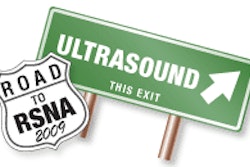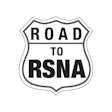Tuesday, December 1 | 11:40 a.m.-11:50 a.m. | SSG09-08 | Room S102D
Coronary CT angiography (CTA), rather than catheter angiography, may be a better way to follow up asymptomatic patients who have a positive stress test, according to a study conducted by researchers at Thomas Jefferson University in Philadelphia.The hospital's cardiologists thought coronary CTA could be a more effective pretest, said the study's lead author, Dr. Ethan Halpern.
"We are faced with many asymptomatic patients who present for cardiac catheterization ... because of a positive stress test," Halpern told AuntMinnie.com. "The majority of these cardiac caths reveal no obstructive disease, and our cardiologists actually suggested that coronary CTA might be a more appropriate workup for these low risk patients with a positive stress study."
Halpern's team performed a decision-tree analysis to compare costs, false-positive rates, false-negative rates, and radiation exposure based on referring patients directly to cardiac catheterization versus referring them to pretesting with coronary CTA. They used cost figures from the 2009 Medicare Physician Fee Schedule and assumed a 4.5-mSv dose for coronary CTA and a 7-mSv dose for diagnostic cardiac catheterization.
The study results were mixed, depending on the percent prevalence of coronary artery disease, according to Halpern. Overall costs for working up asymptomatic patients with a positive stress test were reduced by performing coronary CTA instead of cardiac catheterization as long as the prevalence of significant coronary artery disease was below 75%.
For a prevalence of 50%, the cost savings per patient was $631. The false-positive rate with coronary CTA reached 17%, but dropped to an expected rate of 8.5% at a coronary artery disease prevalence of 50%, he said. The total effective radiation dose was reduced by pretesting with coronary CTA as long as coronary artery disease prevalence was below 25%, but when the prevalence rose to 50%, prescreening with coronary CTA increased the radiation dose from 7 mSv to 8.4 mSv.
"Among patients referred to cardiac catheterization, pretesting with coronary CTA resulted in reduced expected costs and lower effective radiation exposure when the prevalence of coronary artery disease was below 25%," Halpern wrote. "For disease prevalence of up to 50%, pretesting with coronary CTA resulted in reduced expected costs, a slightly higher expected radiation exposure, and more than 40% reduction in the number of required cardiac catheterizations."







